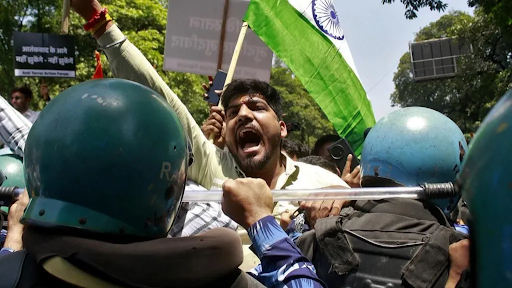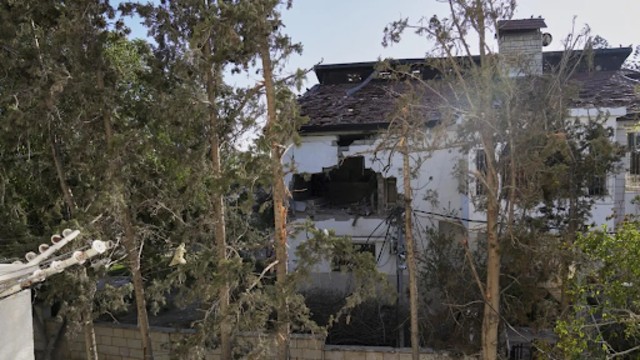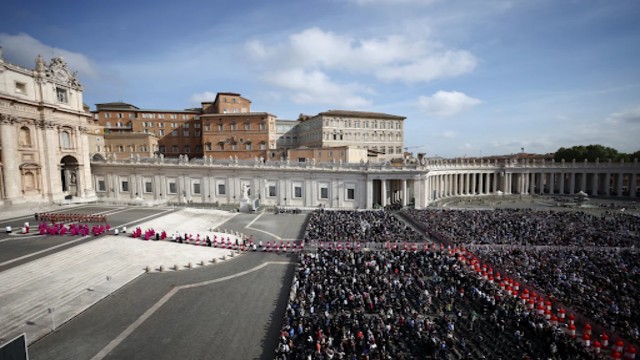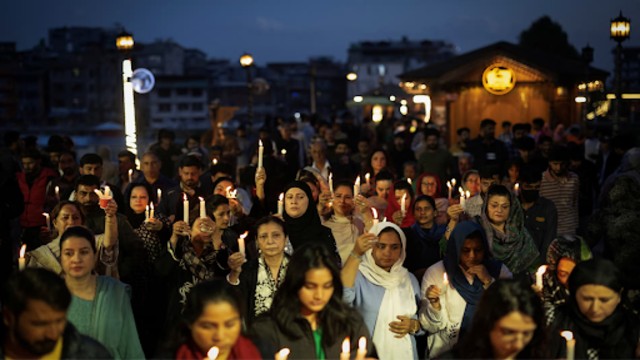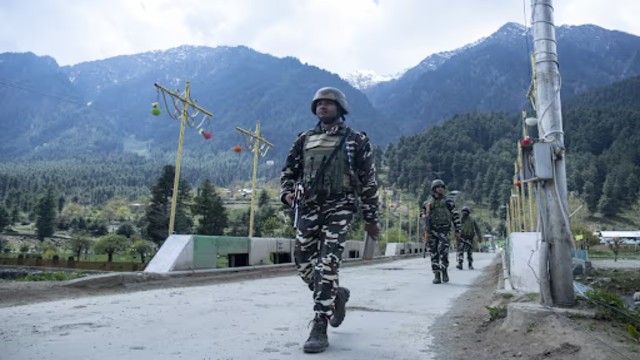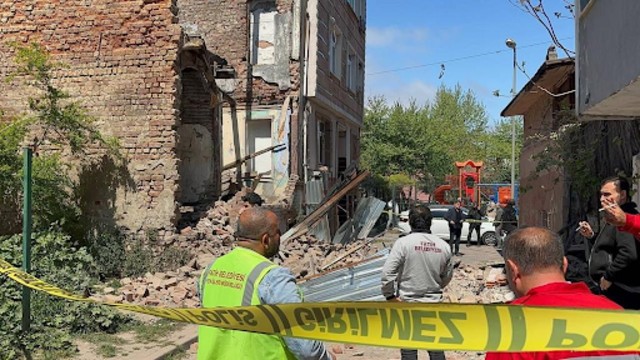
A satellite photo captures a bridge collapsed over the Seym River in Glushkovo district after a Ukrainian attack in the Kursk region on August 17, 2024. Reuters
Ukraine is intensifying its military push into Kursk to establish a "buffer zone" that would safeguard against attacks from Russian forces, President Volodymyr Zelensky revealed on Sunday. This strategy comes as Ukrainian troops successfully blew up a second bridge in the Russian border region, further disrupting Moscow's logistics and supply routes.
Zelensky outlined the broader goals of the Kursk operation, noting that it serves multiple purposes beyond just immediate military gains. "Our primary task is to destroy as much Russian war potential as possible and conduct maximum counteroffensive actions," he said. The goal is to create a secure buffer zone within Russian territory, aiming to weaken the aggressor's military and economic capabilities and to pave the way for a more balanced negotiation process.
The Ukrainian military's foothold in Kursk is reportedly strengthening. Kyiv claims control of nearly 1,000 square kilometres (about 621 square miles) of Russian land, a significant gain amid ongoing clashes. Both Russia and Ukraine are urging residents to evacuate from regions affected by heavy fighting.
A Ukrainian soldier patrols an area in Donetsk region, standing beside spent shell casings. Reuters
On Sunday, Ukrainian forces conducted precise airstrikes, destroying another bridge over the Seym River in Kursk. Ukrainian Air Force Commander Mykolaiv Oleshchuk highlighted the importance of these attacks in crippling the enemy's logistics. The destruction of the first bridge, which occurred two days prior, was attributed to Western-made HIMARS rockets, a powerful weapon that has been pivotal in Ukraine's recent territorial recoveries.
Further evidence of Ukraine's progress comes from a Ukrainian monitoring group, DeepState, which reported advances in Kursk. They shared images of a Ukrainian tank in Olgovka, located about 12 miles north of Sudzha, a town recently captured by Ukrainian forces. Kyiv’s military presence in Sudzha includes a newly established command office, indicating strategic control over the area.
Meanwhile, the situation in Donetsk remains critical as Russian forces push closer to the city of Pokrovsk, a vital hub for Ukrainian military operations. The city, which connects to Kostiantynivka—a key supply route—is under severe threat. "The Russians are close, up to 11 kilometres from the outskirts," said Serhii Dobriak, head of the Pokrovsk city military administration. The city is fortifying its defences in response to Russian advances, with evacuation efforts underway. Nearly 1,800 residents have been relocated in the past week due to the escalating conflict.
A woman walks by a house in Pokrovsk that was wrecked by a Russian attack on August 3. Reuters
Intense fighting is also reported in the villages of Pivnichne and Zalizne, east of Pokrovsk. Russian forces have launched significant assaults in these areas, targeting Ukrainian positions with heavy artillery and aerial bombardments. Over the past week, Russia has reportedly used over 40 missiles, 750 guided aerial bombs, and 200 attack drones against Ukrainian targets.
Despite the pressure on multiple fronts, Ukrainian President Zelensky and his military leaders remain focused on their strategic objectives. General Oleksandr Syrskyi commended Ukrainian troops for their efforts but emphasized the need for faster delivery of supplies from Western allies. "There are no vacations in war," he noted, underscoring the continuous and demanding nature of the conflict.





